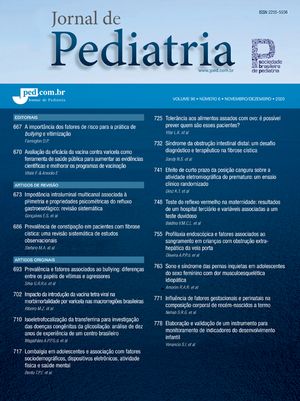
to discuss clinical and electroencephalographic aspects and the genetic mechanisms of three neurogenic syndromes that can be related to nosologic entities in the heterogenic pathological group presenting symptoms of mental retardation and autism.
Sourcesthe authors carried out a bibliographic review on each syndrome involved, correlating and characterizing the neurological manifestations, as well as describing genetic mechanisms and identifying biological markers.
Summary of the findingsthe authors were able to confirm that Rett Sydrome is a genetic disease resulting from the mutation of the MECP2 gene and clinical variations can be explained by different mutations in this gene. Angelman syndrome has four genetic mechanisms responsible for phenotypic variations and different risks of recurrence. In Fragile-X syndrome, the degree of cognitive impairment is related to the number of trinucleotide repeats.
Conclusionsdifferent genetic mechanisms of the three syndromes are responsible for clinical variability. By identifying the biological markers, the diagnosis will be performed earlier and it will be possible to identify new subtle expressions of the disease.
discutir os aspectos clínicos, eletroencefalográficos e os mecanismos genéticos de três síndromes neurogenéticas, que se identificam como entidades nosológicas no grupo heterogêneo de patologias que cursam com retardo mental e autismo.
Fontes dos dadosos autores realizaram revisão literária sobre cada síndrome do estudo, atualizando as informações, correlacionando e caracterizando as manifestações neurológicas, assim como a descrição dos mecanismos genéticos e a identificação dos marcadores biológicos.
Síntese dos dadoshouve a confirmação de que a síndrome de Rett é uma doença genética, conseqüente à mutação no gene MECP2, com variações clínicas que podem ser explicadas por diferentes mutações nesse gene. A síndrome de Angelman tem quatro mecanismos genéticos responsáveis pela variação fenotípica e pelos diferentes riscos de recorrência. Na síndrome do X-Frágil, o grau de comprometimento cognitivo está relacionado com o número de repetições dos trinucleotídeos.
Conclusõesos diferentes mecanismos genéticos das três síndromes são responsáveis pela variabilidade clínica. Com a identificação de marcadores biológicos, o diagnóstico será mais precoce, ademais, poderão ser identificadas novas e mais sutis formas de expressão.








